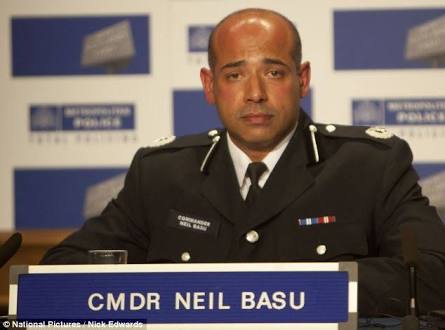
 “A true strategic partnership offers tremendous benefits to both nations. India gains an opportunity to become a real global power, and the US gains a mammoth regional ally and counterweight to China, with the potential for greater cooperation on issues of global security. Establishing a lasting US-India partnership would be a game-changing success for President Trump and Prime Minister Modi.”
“A true strategic partnership offers tremendous benefits to both nations. India gains an opportunity to become a real global power, and the US gains a mammoth regional ally and counterweight to China, with the potential for greater cooperation on issues of global security. Establishing a lasting US-India partnership would be a game-changing success for President Trump and Prime Minister Modi.”
Trump administration’s decision in July to grant India Tier 1 Strategic Trade Authorization status, a designation given only to close allies has created a golden opportunity for India and the US to become close allies. Will the US be bolder and seek to transform the US-India relationship into a robust strategic partnership?
TWO PLUS TWO MEETING IN NEW DELHI
Secretary of State Pompeo and Secretary of Defense Mattis can begin executing an ambitious strategic partnership with India when they meet with Prime Minister Modi in New Delhi in September for the Two plus Two meeting. Will the Government of India and the Indian media discuss this seriously before September?
President Trump has started creating a new world order. Make America Great and America First call for revolutionary changes in US foreign policy and trade relations. Trade deficit is the largest with China. Trump seems to be ready to do serious business with India. India has a comparative advantage over China because the wages are substantially lower in India. If India is able to replace China as the source of American imports of consumer and industrial goods, the US will gain.
Will India be prepared to liberalize its economy and embark on using capitalistic tools as China did with America’s help? Will India be prepared to privatize all its public sector corporations and release the assets for building a modern India? Will India adopt new policies to attract large scale foreign private investments?
INDIA’S RELIANCE ON RUSSIA FOR MILITARY HARDWARE
Modern wars are won by using sophisticated technology. Though Russia has been a reliable supplier of military hardware, we know no country can compete with the US and Israel on latest technology and sophisticated weapons systems. While India has purchased weapons systems from the US to the tune of $15 billion since 2008, its use of Russian equipment poses interoperability problems and raises concerns about compromising sensitive technology.
India’s decision to procure S-400 Russian air-defense systems is particularly troubling, since those typically involve substantial service and training components. The presence of Russian personnel at the heart of India’s air defenses, even if only temporary, could hold up future US-India defense deals. If the S-400 sale cannot be canceled, the best scenario would be to persuade India to limit the scope of Russian support services and turn to another country with a strong record of using and improving Russian defense equipment—namely Israel.
JOINT MILITARY EXERCISES
Meanwhile, the Trump administration can broaden US-India defense cooperation by increasing the number of joint military exercises and expanding the annual Malabar war games. The members of the Quadrilateral Security Dialogue, an informal dialogue initiated in 2007 by Japan’s Prime Minister Shinzo Abe among the US., Japan, Australia and India, should also be formalized and meet more regularly.
MODI CALLED THE U.S.A. AN INDISPENSABLE PARTNER DURING HIS 2017 VISIT
Close alliance with India would provide the US with a valuable, democratically committed to thwarting China’s intensifying efforts to dominate the region. Already India has been keen to enhance its relationship with America. Prime Minister Narendra Modi called the USA an “indispensable partner” during his 2017 visit to Washington. As India scholar Ashley Telis put it, Modi’s “daring decision to collaborate wholeheartedly” with America shows he recognizes that the “the US holds the most important keys for India’s long-term success.” Greatly concerned about China’s economic and diplomatic expansionism in the Indo-Pacific, India has turned to the USA for support. Pakistan’s increasingly anti-American and pro-Chinese policies have also brought the USA and India into a closer embrace.
INDIA’S DEPENDENCE ON IRAN FOR OIL
The resumption of US sanctions on Iranian oil exports Nov.4 will pose a challenge. India has no affection for the Islamic Republic, but after China it is the second-largest importer of Iranian oil, bought at a substantial discount. As the US rightly seeks to block Iranian oil exports, it must be adroit in persuading India to join. Washington needs to grant India a temporary waiver from the sanctions and help New Delhi find acceptable alternative energy sources, perhaps by persuading Gulf allies to sell oil to India at prices comparable to Iran’s.
TRADE TENSIONS NEED TO BE RESOLVED
India has made a formal complaint with the WTO over US tariffs on steel and aluminum, and it is preparing to impose retaliatory tariffs up to 70% on key agricultural exports. Additional rounds of tariffs are reportedly under consideration. Given that India sells $48.6 billion in goods and services to the US, its largest export market, a good way to proceed would be to grant India a waiver on the newly imposed tariffs and work on negotiating a comprehensive bilateral trade deal.
CHALLENGES TO CLOSE PARTNERSHIP
India’s reliance on Russia, India’s dependency on Iran for oil, and US-India trade tensions are challenges that will require policy makers to negotiate hard and make difficult compromises. A true strategic partnership offers tremendous benefits to both nations. India gains an opportunity to become a real global power, and the US gains a mammoth regional ally and counterweight to China, with the potential for greater cooperation on issues of global security. Establishing a lasting US-India partnership would be a game-changing success for President Trump and Prime Minister Modi. I must recall the warm hug and embrace between Trump and Modi at the White House in 2017 and its far-reaching consequences.
(The author, a 64-year resident in the USA, is Chairman, Asian American Republican Committee (30thanniversary). Email: vpwaren@gmail.com)





Be the first to comment